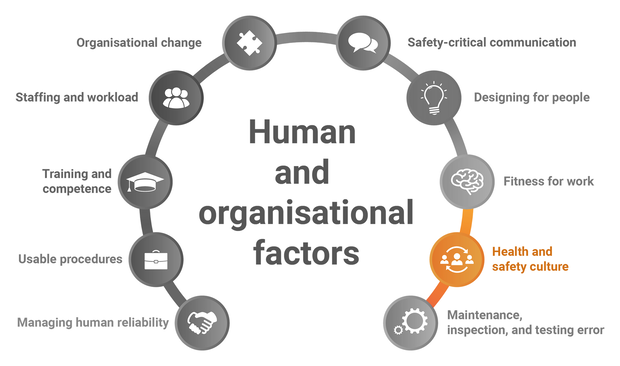
Health and safety culture – Management of contractors
Contractors are organisations or individuals who provide a service, but are not directly employed by the principal employer.
These services may be provided:
- onsite – e.g. specialist maintenance activities, asbestos removal; or
- elsewhere – e.g. provision of design, safety analyses.
The economics of contracting often appear attractive, however, the most common error made by organisations is allowing insufficient resources for supervising and managing contractor performance.
It is also important to remember that employing contractors to do the work does not diminish the legislated responsibilities of the principal.
Safety management systems for contractors
Contractor management needs to be based on agreed outcomes and governance systems to ensure they are being consistently achieved. Safety performance standards need to be established and the contractor’s safety systems evaluated to ensure they will deliver the outcomes required by the principal.
An example of this might be to require that the contractor apply risk management tools and processes at various levels of the project or work such as:
- project risk management
- work or area specific risk management
- task specific risk management
- personal risk management.
The contractor would then be required to demonstrate that their processes achieve the outcomes specified by the principal employer. This evaluation must be done prior to engagement of the contractor. Larger risk management processes such as a project risk assessment would be carried out collaboratively.
It is not uncommon for contractors to have a higher level of health and safety performance than the principal employer and consequently drive improvement upwards – an important reason why embracing a collaborative and consultative processes is important.
Collaboration and consultation improves understanding by both the contractor and principal employer of the key hazards, risks and controls associated with the work being carried out and also ensures that the principal fulfils their health and safety obligations.
What is the role of supervision in contractor management?
Effective supervision and open two-way communication is fundamental to the health and safety performance of contractors.
Successful contractor management relies on communicating performance expectations prior to engagement and ensuring that the safety management system will not only achieve those outcomes, but drive continual improvement.
An evaluation and tender system should be established that addresses:
- contractor experience and capability of meeting the principal’s technical requirements
- contractor’s health, safety and environmental systems and their ability to meet the principal’s standards.
The contractor management system needs to be scalable as smaller, less mature contractor organisations will not have the level of safety management systems that the larger organisations do. These smaller contractors may need to be provided with health and safety management tools and systems to ensure that they do not present a risk to themselves or others. Organisations are better placed to understand this if they already have some prior knowledge of the contractor’s operation and processes through an effective pre-qualification and tender process.
Resources
|
This webpage by DMIRS describes the importance of safety and health culture and provides resources on topics related to safety and health culture. |

